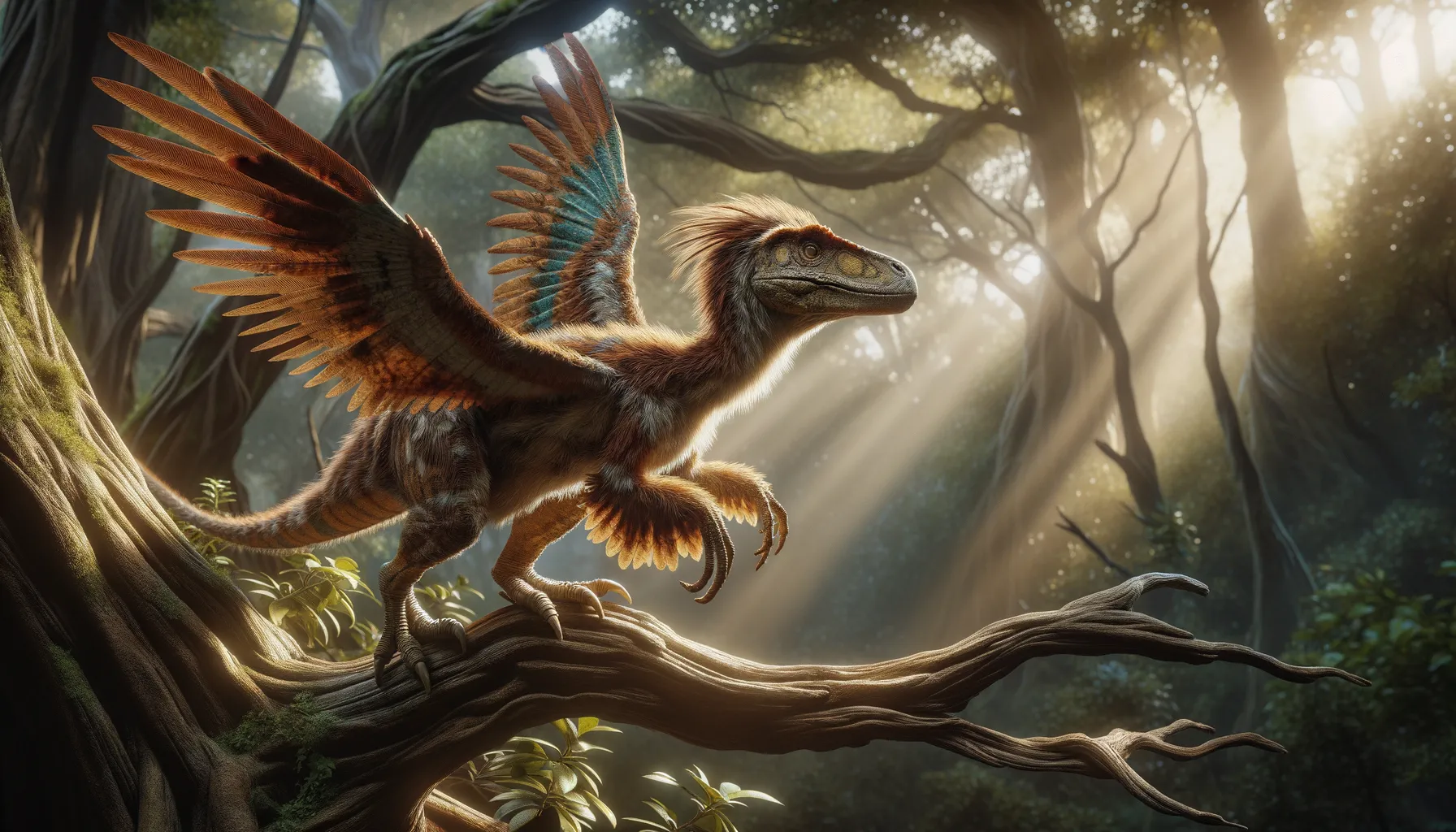
Scansoriopteryx
Tiny climber bridging the dino-bird gap!
Period
Jurassic
Length
About 25 centimeters or 10 inches long.
Height
Around 15 centimeters or 6 inches tall.
Weight
Approximately 100 grams, like a small bird.
Scansoriopteryx was a small, feathered dinosaur from the Jurassic period, notable for its bird-like characteristics. Often referred to as a 'tree-climbing lizard', it was an important species for understanding the link between dinosaurs and birds. This tiny creature lived in what is now China and possessed feathers, suggesting early adaptations for flight or gliding.
Diet
Scansoriopteryx primarily fed on insects and small animals. It might have also consumed fruits or seeds when available, taking advantage of its arboreal habitat.
Hunting
It likely used its small size and agility to catch insects among branches and foliage. The sharp claws suggest an adeptness at grasping prey in trees.
Environmental challenges
Living in a dense, forested environment presented challenges, such as finding food and avoiding larger predators. Its small size was both an advantage and vulnerability, allowing it to hide but also making it targetable by larger species. Seasonal changes could have affected food availability, demanding adaptability in diet and activity patterns.
Speed
Relatively slow due to its small size and ability to climb.
Lifespan
Estimated to live for several years, similar to modern small birds.
First discovery
Discovered in the early 1990s in Liaoning, China.
Fun Facts
- Scansoriopteryx means 'climbing wing', and it was a small dinosaur with bird-like features, suggesting it could glide or climb trees.
- It lived during the Jurassic period, about 160 million years ago, in what is now China.
- Scansoriopteryx had long fingers and claws, which helped it climb trees and could indicate it was an early experiment in the evolution of flight.
- Unlike most dinosaurs, Scansoriopteryx was tiny, roughly the size of a modern-day sparrow.
- Its discovery has provided key insights into the transition between non-avian dinosaurs and birds.
- Scansoriopteryx had a long tail and feathers, indicating that feathers were not originally evolved for flight but possibly for insulation or display.
- Fossils of Scansoriopteryx are so well-preserved that they show imprints of its feathers, giving us a glimpse into the appearance of these ancient creatures.
Growth and Development
Scansoriopteryx grew quickly to reach maturity, similar to modern birds. It developed flight-related anatomy from a young age, indicative of early flight or gliding capabilities. Juveniles would require protection, likely relying on camouflage to avoid predators during maturation.
Habitat
It inhabited forested areas with dense vegetation that supported abundant insect life. This environment was ideal for its arboreal lifestyle, offering plenty of climbing opportunities. The forest ecosystem was vital for its survival, providing both food and shelter.
Interaction with other species
Scansoriopteryx likely interacted minimally due to its small size, focusing on avoiding predators. It might have competed with other small dinosaurs and early mammals for similar food resources. Interactions were likely centered around food competition and evasion of predators.
Natural lifespan
Scansoriopteryx could live for a few years, similar to small birds.
Reproduction
Scansoriopteryx might have laid eggs in nests built in trees or on the ground. Parental care, if present, would likely focus on protection from predators and ensuring young stayed secure until mobilized.
Social behaviour
Scansoriopteryx might have lived solitarily or in small family groups. Social structures were likely minimal, focusing more on survival strategies. In-group communication may have involved visual and auditory signals during feeding or nesting.
Fossil locations
Significant fossils of Scansoriopteryx have been found in Liaoning Province, China. The discoveries in the rich fossil beds of this region have provided insight into its lifestyle and environment. The specific site has been a hotspot for finding feathered dinosaur fossils, enhancing our understanding of the dinosaur-bird relationship.
